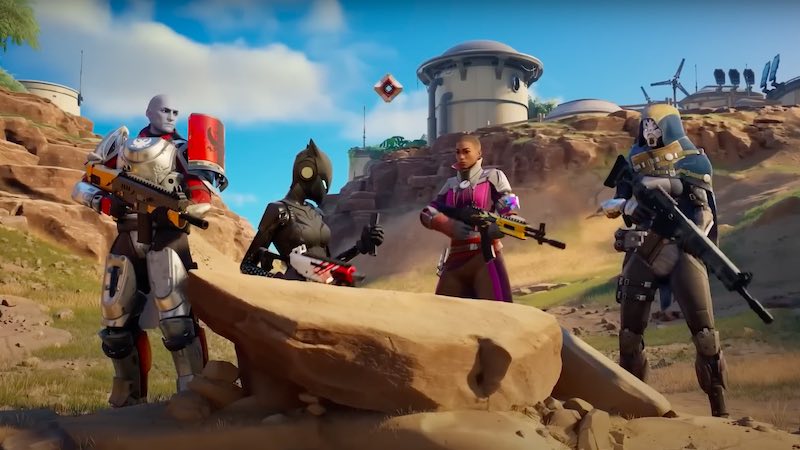Fortnite is packed with skins, but some of the most exciting additions come from its crossovers with other franchises. While the game has collaborated with various movies and TV shows, the Fortnite Gaming Legends skins stand out as some of the most thrilling. These skins bring characters from legendary gaming franchises into Fortnite, allowing players to battle it out with their favorite icons from other titles.
A Collection of Gaming Icons
The Fortnite Gaming Legends series features some of the most popular characters in gaming history. While some skins remain frequent choices in the game, others have been absent for years, making their return highly anticipated. Street Fighter characters, for example, haven’t been seen in quite some time. Despite this, the collection remains a favorite among Fortnite players.
The Complete List of Gaming Legends Skins
Fortnite has covered an impressive range of gaming titles, bringing characters from various universes into its world. With so many crossovers, it’s easy to forget just how many legends have made their way into the game. Here’s a breakdown of every Fortnite Gaming Legends skin and the game they originally came from:
- A Goat – Goat Simulator
- Alan Wake – Alan Wake
- Aloy – Horizon
- Among Us Backbling – Among Us
- Arcane Jinx – League of Legends
- Arcane Vi – League of Legends
- Blanka – Street Fighter
- Cammy – Street Fighter
- Chris Redfield – Resident Evil
- Chun-Li – Street Fighter
- Ciri – The Witcher
- Claire Redfield – Resident Evil
- Commander Zavala – Destiny
- Doom Slayer – Doom
- Elvor Varinsdottir – Assassin’s Creed
- Exo Stranger – Destiny
- Ezio Auditore – Assassin’s Creed
- Garog – Unreal Tournament
- Geralt of Rivia – The Witcher
- Guile – Street Fighter
- Ikora Rey – Destiny
- Isaac Clarke – Dead Space
- Jill Valentine – Resident Evil
- Johnny Silverhand – Cyberpunk
- Kait Diaz – Gears of War
- Kratos – God of War
- Lara Croft – Tomb Raider
- Leon S. Kennedy – Resident Evil
- Marcus Fenix – Gears of War
- Master Chief – Halo
- Nord Warrior – Elder Scrolls
- Pac-Man Backbling – Pac-Man
- Fall Guys Backbling – Fall Guys
- Psycho Bandit – Borderlands
- Raiden – Metal Gear
- Ryu – Street Fighter
- Sakura – Street Fighter
- Samael – Unreal Tournament
- Solid Snake – Metal Gear
- T-60 Power Armor – Fallout
- The Employee – Lethal Company
- V – Cyberpunk
- Yennefer – The Witcher

What Defines the Gaming Legends Series?
The Fortnite Gaming Legends series is a collection of crossover skins featuring some of the most recognizable figures in gaming. The characters included in this lineup are typically from major gaming franchises, though their inclusion often depends on licensing agreements. Originally, these skins were classified with a unique rarity in the item shop, but Fortnite later removed cosmetic rarities, leaving Gaming Legends as a standalone category without a specific rarity tier.
Which Franchise Has the Most Fortnite Skins?
While Fortnite itself naturally has the highest number of skins, several gaming franchises have received multiple representations. Among them, Street Fighter currently holds the record with five skins in the game. Given the series’ extensive history and vast roster of characters, this number could easily grow. Other franchises, such as Resident Evil, have also seen multiple additions over time.
The number of Gaming Legends skins from a single franchise often depends on their popularity, demand, and licensing agreements. Some publishers and developers are more willing to collaborate with Epic Games, while others remain cautious. This means that while Fortnite has introduced a diverse set of gaming characters, many potential crossovers remain unexplored.

Canceled Fortnite Gaming Legends Skins
Not every leaked or planned Gaming Legends skin makes it into Fortnite. Over the years, data miners have uncovered potential skins that ultimately never saw the light of day. One of the most famous examples is Samus Aran from the Metroid series.
During Fortnite’s Hunters season, which featured a surge of Gaming Legends skins, Epic Games reportedly approached Nintendo about bringing Samus into the game. However, Nintendo ultimately declined after learning that Samus would need to be playable across all platforms rather than being exclusive to the Nintendo Switch. As a result, the collaboration never materialized.




